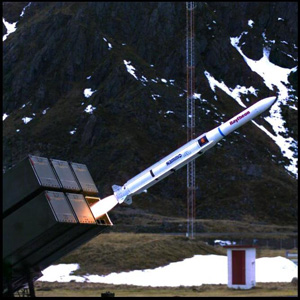INDIAN ARMED FORCES CHIEFS ON
OUR RELENTLESS AND FOCUSED PUBLISHING EFFORTS

SP Guide Publications puts forth a well compiled articulation of issues, pursuits and accomplishments of the Indian Army, over the years

I am confident that SP Guide Publications would continue to inform, inspire and influence.

My compliments to SP Guide Publications for informative and credible reportage on contemporary aerospace issues over the past six decades.
- Prime Minister witnesses 'Bharat Shakti' – a Tri-Services Firing and Manoeuvre Exercise in Pokhran, Rajasthan
- Interim Defence Budget 2024-25 — An Analysis
- Union Defence budget 2024
- Prime Minister Modi Commemorates Indian Navy Day in a Grand Ceremony
- Prime Minister Modi Flies in the LCA Tejas
- New Chapter in India-Italy Defence Ties
- Airpower beyond Boundaries
'Raytheon has many solutions to meet the need of Indian services'
Tim R. Glaeser, Vice President and Business Development Executive for Integrated Air and Missile Defense (IAMD), Business Development and Strategy, Integrated Defense Systems (IDS), in an interview with SPís M.A.I., spoke in detail about Raytheonís missile defence systems.
A Brief Profile of Tim R. Glaeser

Tim R. Glaeser joined Raytheon in August 2004, after a 24-year career in the US Army. Prior to his retirement, he served as Commander, 11th Air Defense Artillery Brigade. During Operation Iraqi Freedom, he commanded the US and Kuwaiti Patriot forces. As the VP and Business Development Executive for IAMD, Business Development and Strategy, IDS, Glaeser is responsible for developing customer-focused marketing strategies and the growth of domestic and international markets. Glaeser has also previously served as Vice President, IAMD, Patriot Programs.
SPís M.A.I. (SPís): Can you tell us about Raytheonís Patriot, Hawk XXI and the national advanced surface-to-air missile system (NASAMS)? Are they being offered to India?
Tim R. Glaeser (Glaeser): As the OEM of Patriot, Hawk XXI and NASAMS, we are proud of the reputation as the ďbest in classĒ for each of the market sectors these programmes support. We are working with our many international partners to continue to enhance the effectiveness of the systems and reduce the total cost of ownership. Specific public release information on each can be provided based on the requirements stated in the RFI. We are reviewing all RFIs released by the Indian Army, Air Force and Navy.
SPís: Can you give us details of Raytheonís very short-range air defence (VSHORAD) and short-range surface missile (SRSAM) systems?
Glaeser: Raytheon has many solutions to meet the need of Indian services for VSHORAD and SRSAM. Our platform launched Stinger and Javelin are well known in the Indian armed force community. For SRSAM, we have both HAWK XXI as well as NASAMS that are capable of meeting and exceeding the requirements stated by Indian Air Force and Indian Army.
SPís: Tell us about Raytheonís medium-range surface-to-air missile (MRSAM) and long-range surface-to-air missile (LRSAM) programmes? How do they fit into the Indian Armyís requirement for providing air defence (AD) to mobile and semi mobile assets?

Glaeser: For MRSAM class of system, we are confident that Patriot continues to be the golden standard for defence against air breathing threats, cruise missiles, tactical ballistic missiles and many other types of threats. We are also proud to say that 12 other nations have embraced Patriot as their primary defence structure against these threats. Mature, battle-proven and continuous technology upgrade to system capability keeps Patriot as the pack leader in the MRSAM class of system in the world. We consider LRSAM as an architecture rather than a system that is comprised of early warning radar, sensors, C4ISR node, integrated air missile defence and family of effectors. In the LRSAM class of system, Raytheon has vast number of systems and elements that can be specifically tailored to meet the need of LRSAM requirements. We have not seen any requirements in the area of MRSAM and LRSAM from the Indian Army. We have provided approved information in these weapon class systems to the Indian Air Force. Patriot is known to protect mobile and semi mobile assets as proven in two wars. Based on the request for information (RFI) seen, we feel HAWK XXI and NASAMS are the right solution set for Indian Army.
SPís: Has surface-launched advanced medium-range air-to-air missile (SLAMRAAM) been successful in the US Army?
Glaeser: As you know, internationally, we have renamed SL-AMRAAM as NASAMS (national advanced surface-to-air missile system). The US Army National Guard currently mans NASAMS in the National Capital Region. NASAMS is fielded globally in six countries. The US Army selected NASAMS for the National Capital Region in 2004 and it was installed and operational within 90 days of the decision and has till date protected the critical assets in and around the nation's capital with an extremely high operational readiness (OR) rate. NASAMS can affordably protect large areas with an aggressive horizontal keep out radius, high OR, low sustainment costs, and low manpower operating requirements.
SPís: Do you have specific systems for the Navy and the Air Force as well?
Glaeser: We are confident that our family of surface-to-air missile defence solutions are well suited for Indian Air Force as well as Indian Navy. We are yet to see any requirements from the Indian Navy.
SPís: Are there any air defence (AD) battle management systems being offered?
Glaeser: Each of our systems and solutions come with a battle management system. The offer will depend on which solution and system the Indian armed forces will acquire.
SPís: Are you planning for joint ventures with DRDO, especially in the field of ballistic missile defence?
Glaeser: Our sister division, Raytheon Missile Systems is engaging DRDO in the area of ballistic missile defence at a level they are approved by the United States Government. We are actively trying to engage DRDO with respect to approved technology projects in the area of endo surface-to-air missile defence.
SPís: Do you have any plans to participate in joint ventures with Indian defence public sector undertakings (DPSUs) and/or private companies?
Glaeser: Like everyone, Raytheon continues to evaluate Indian defence and homeland security market to seek appropriate partners and team members. As appropriate opportunity is presented, Raytheon is fully committed to take the necessary steps to explore and act on these requirements.
SPís: What are your plans for offsets and transfer of technology (ToT)?
Glaeser: Raytheon has successfully executed offsets and transfer of technology (ToT) requirements under the FMS route and/or the DCS route around the world with various countries and companies. We will embark on these requirements on a case by case basis by working closely with the US Government, Government of India (GOI) and our industry partners in India.
SPís: Can you share some of the recent success stories? We shall appreciate if you can elaborate on the reasons for such achievements?
Glaeser: Raytheon continues to take pride in providing capable, proven, technically unmatched and best value solutions to our customers worldwide. In the area of air and missile defence, our recent contracts from KSA, Taiwan, and UAE, to name a few, shows that our customers have chosen the right system solution to protect their critical infrastructures and their homeland, which I would attribute to our engineers, our company values, our customer focus and our capable systems.





